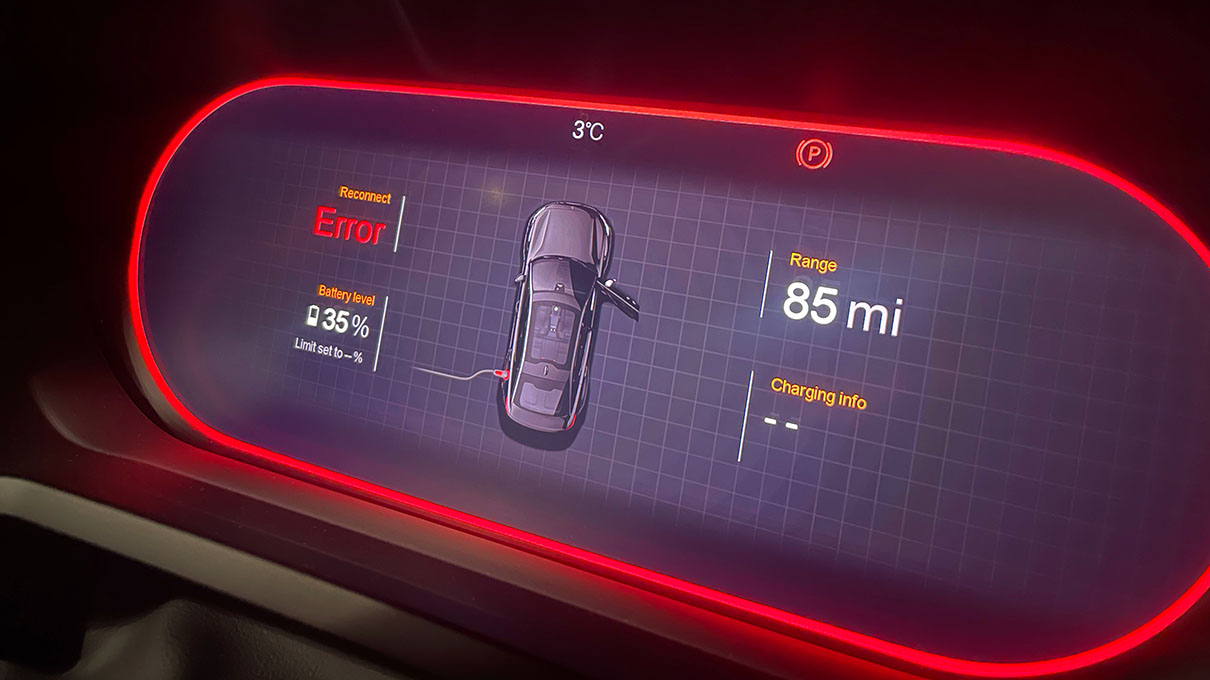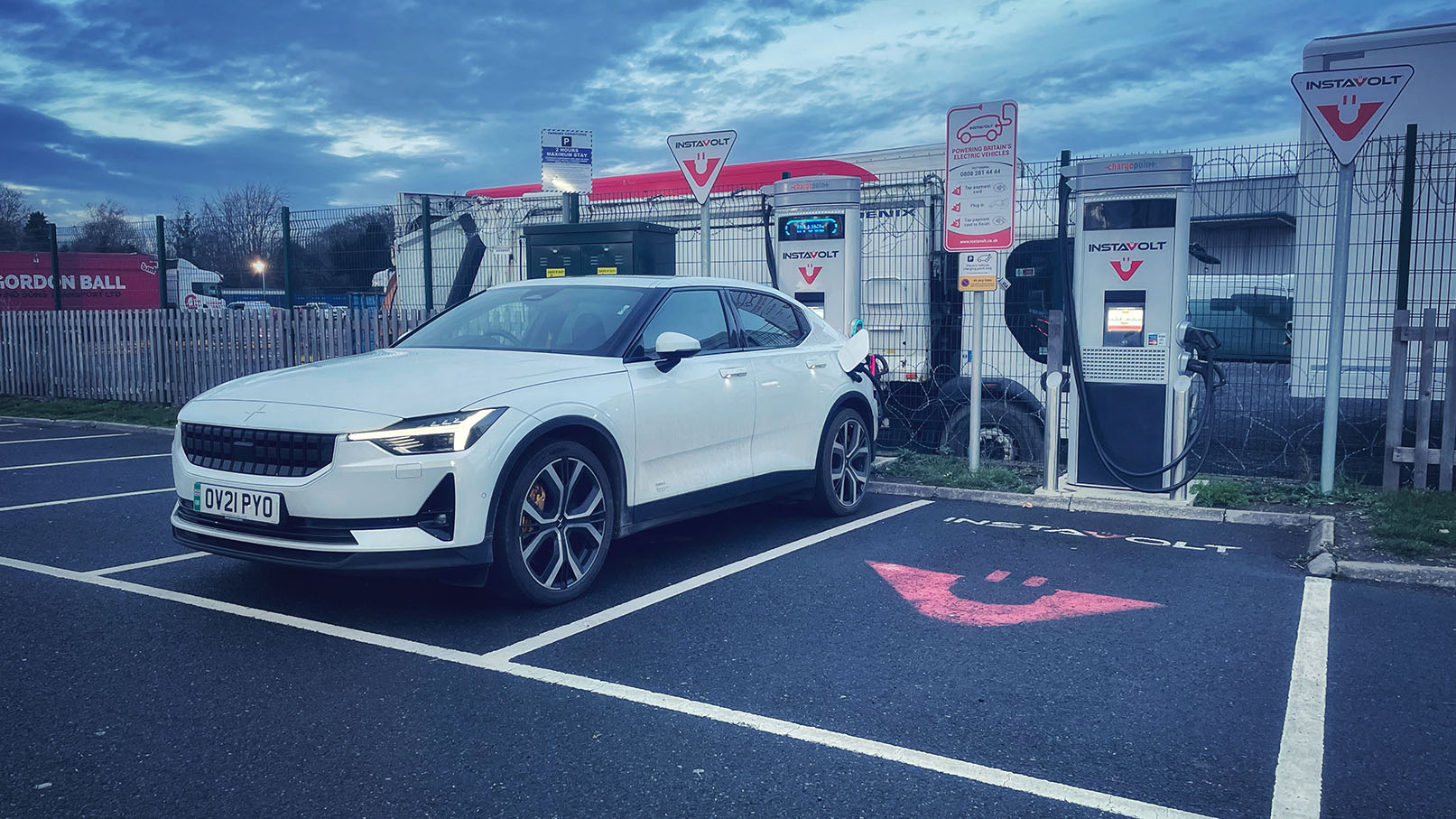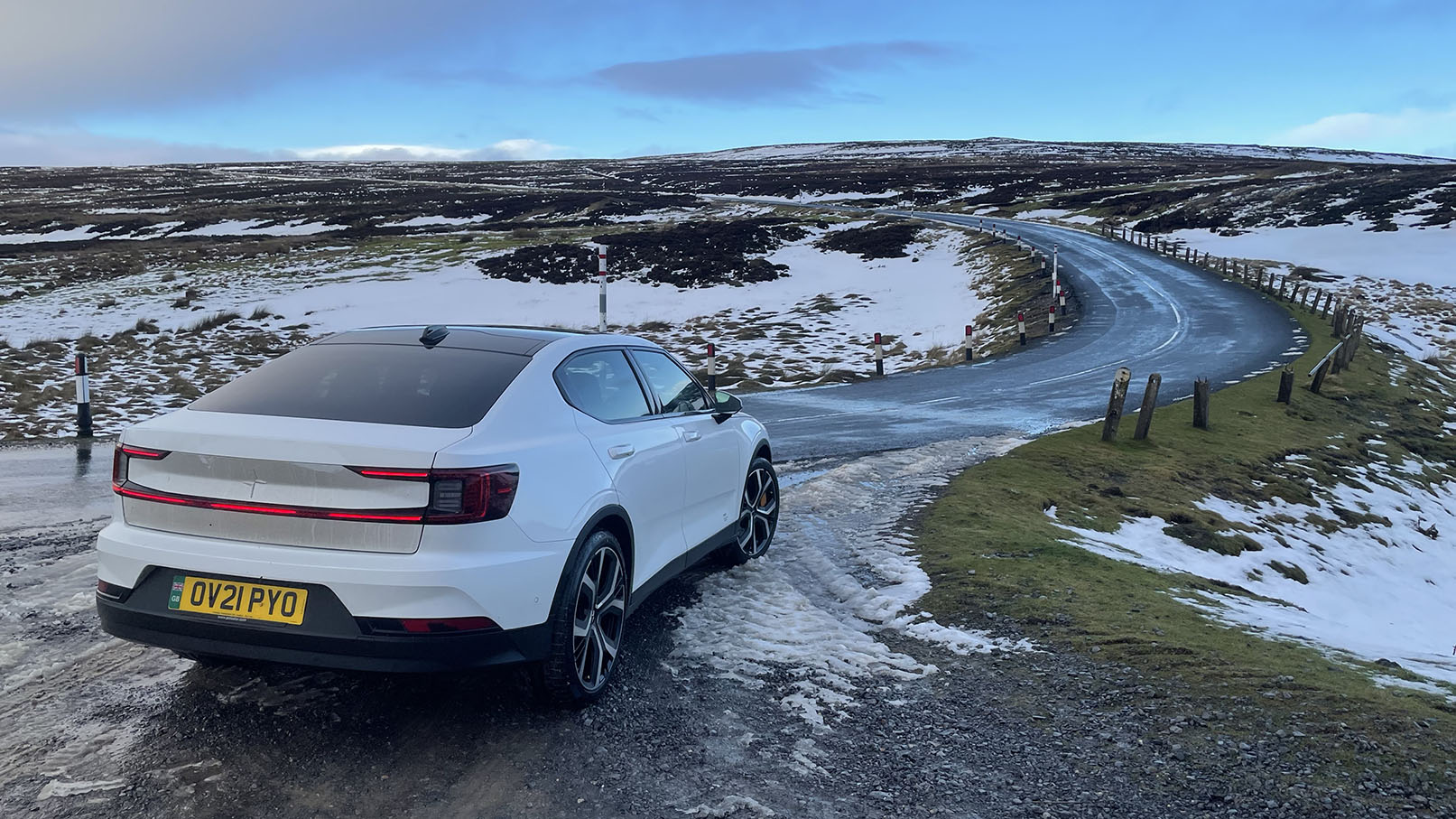
Polestar 2 Long Range AWD Performance Pack - long-term review
£45,900 (£58,900 as tested)
SPEC HIGHLIGHTS
- SPEC
Long Range AWD Performance Pack
- Range
292 miles
- ENGINE
1cc
- BHP
408bhp
- 0-62
4.5s
How easy is it to run a Polestar 2 EV in winter?
Winter is not electric car-friendly, slowing battery chemistry to the point where it feels like the range is hibernating along with the world’s tortoise population. So running a Polestar 2 through the depths of winter seems like a classic case of making a rod for one’s own back.
But I’m fairly familiar with this stuff now, so I thought there weren’t many surprises to be had. I was wrong. First up, the basics; the Polestar 2 has a 75.0kWh battery pack and a possible 150kW DC charging ability. It’ll do roughly 180 miles on 100-per cent charge in cold temperatures if you drive normally, compared to a ‘possible’ (not possible) 299miles of range on the standard WLTP cycle.
You’ll see 200 if you drive with miniature feet and annoyingly gradual everything. And that’s with the heatpump (part of the £4k Plus Pack) and pre-conditioning (which I use pretty much every day, and find perfectly simple). To be fair, Polestar makes no bones about all of this, and there’s a range calculator on the Polestar app that is pretty accurate: 70mph at around 5-degrees (cold), and you won’t be setting any range records.
With my eclectic driving requirements, that also means I’ve spent a lot of time investigating the UK’s public charging network, and the result is that I haven’t so much got range anxiety as much as infrastructure anxiety. Several bad experiences leading me to overthink and - on most journeys - overcharge my car, just so I maintain options whenever I get to a public unit.
The thing is, nothing is simple. I do plan, and I do use the available apps and forward-thinking. But you can’t always charge when most convenient, because life has other plans. Add to that the mathematics of charging and the massive variability, and you start to get a bit frustrated. For instance, to charge an electric car, you have to take into account how much charge your car can accept (150kW DC in the P2’s case, which is pretty good). Then you have to note what the capacity of the charger is, battery state-of-charge (SoC), temperature and condition.
Now, all electric cars step their charging as more power flows into the battery. The P2’s charging graph (which you can find on websites like FastNed and EV Database) indicates that even if you’re on a 150kW charger, it can only charge at 150kW from about 7 to 15-per cent SoC. Then it drops to about 127kW. It then drops to just under 100kW at about 40-per cent SoC, and to just under 75kW at about 55, before dropping off a cliff and slowing dramatically at 80-per cent. It averages out at about 105kW across a charge. So realistically, you’ll never really see it pull 150kW from even the biggest chargers for very long. So there’s not much point putting the car on a charger above 125kW most of the time.
After that, I’ve encountered low speeds when the charging units are busy, as the site power disseminates the available energy across the charging bays. So it gets really hard to say how long it’ll take to get a certain amount of miles of range into the battery, even if you stick the car on a big rapid charger and have the ability to suck it into the vehicle. Now, all of this gets a bit academic, simply because finding a decent charger nearest to your route and staying as long as you have to is what you end up doing. And sometimes that’s fine. But when it isn’t, it hurts.
Add to that issues with queuing - there isn’t a proper system for when multiple units are busy, so we’re relying on everyone’s good graces - bad lighting and position of some chargers, disabled or easy access spaces and the general terrible signage. As an EV owner, you can often end up touring a services carpark looking for the charger a couple of times. Now, a lot of this stuff doesn’t affect me directly, but you can see the cracks quite clearly for those for whom it will.
One other thing to note: when conducting my entirely unscientific tests on range, I found that when you get to sub-10-per cent of range, the P2 drops into a ‘tortoise mode’ to eke out the last few electrons and get you to a charger. A little tortoise appears in the screen, and power is limited. I’ve seen that little fella a bit too much for comfort…
This sounds pretty negative, but to be honest, I do most of my charging at home and probably only end up on public chargers two or three times a week. And I’ve had some absolutely seamless experiences, giving me glimpses of how easily it can all work. If you’ve got a regular commute and figure out where all the chargers are, for instance, things get really simple. But criticising a situation with an aim to improve it doesn’t mean I’m unconvinced by the whole thing - just that we can see where we can sort things out a bit.
The Polestar 2 puts me in a relatively privileged position of being able to make best use of whatever charging I can lay my hands on, and having a nice place to hang out while I do. I’ve just installed some extra apps for the P2’s Google system, including the new Vivaldi web browser. That means I can shop while I sit. On second thoughts, that’s a really bad idea…
Featured

Trending this week
- Car Review
BMW iX3






